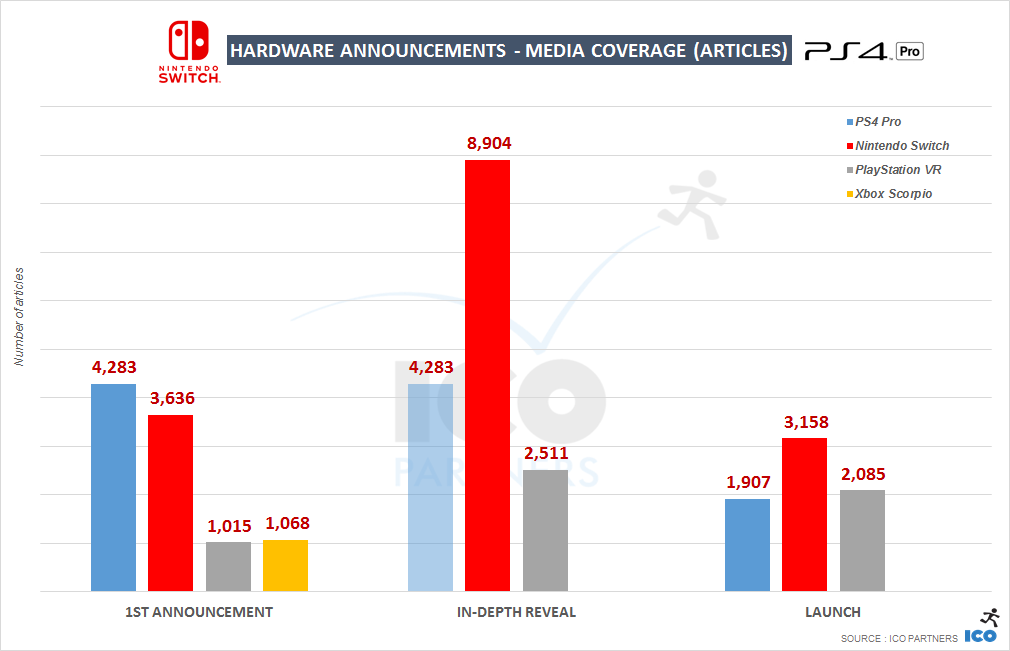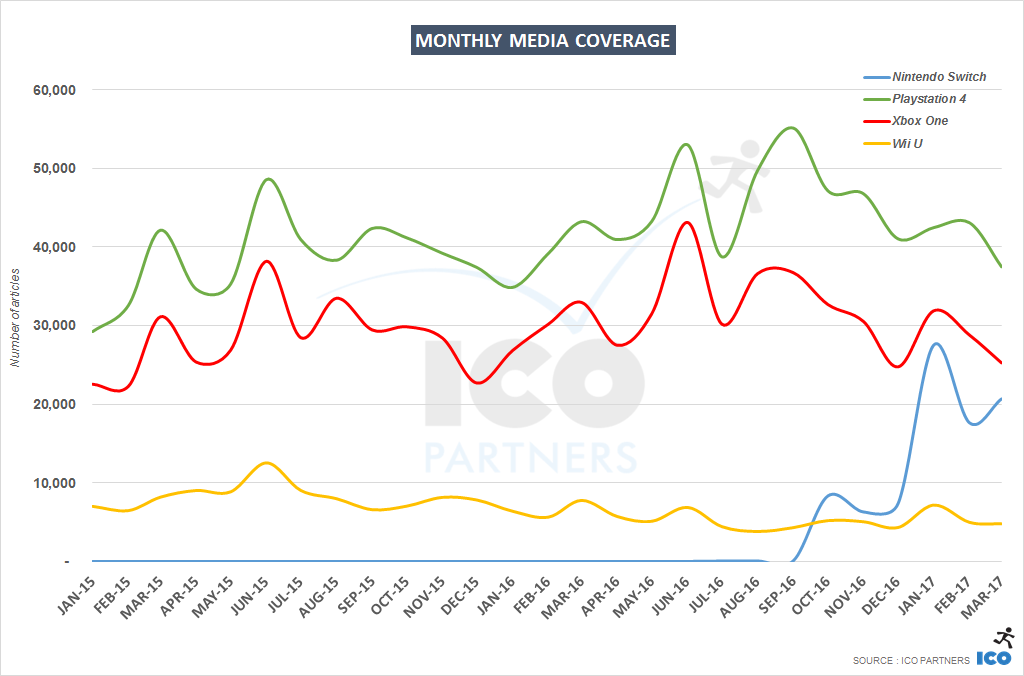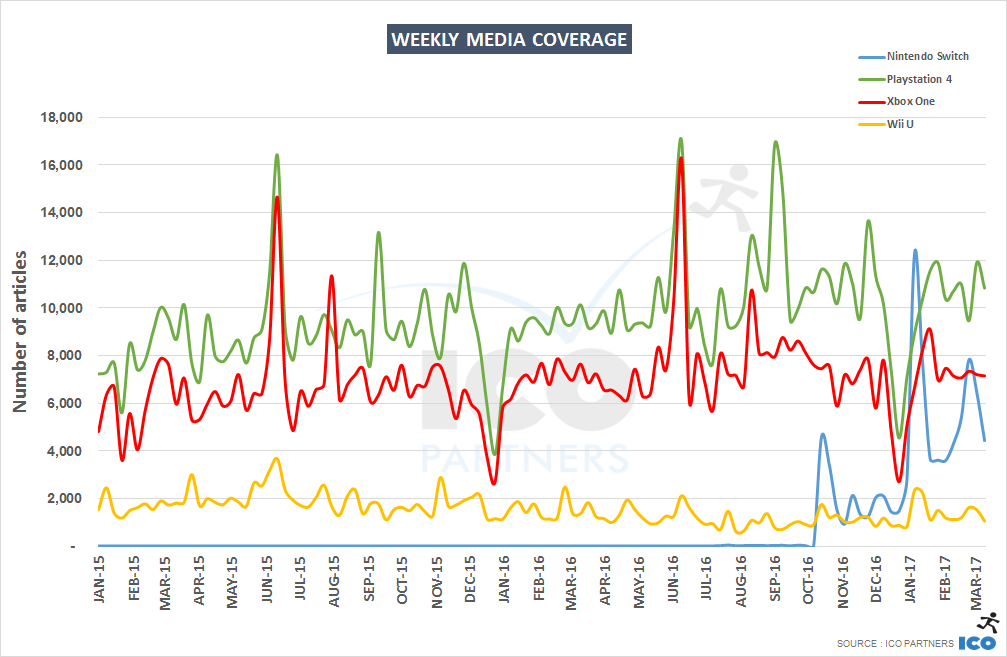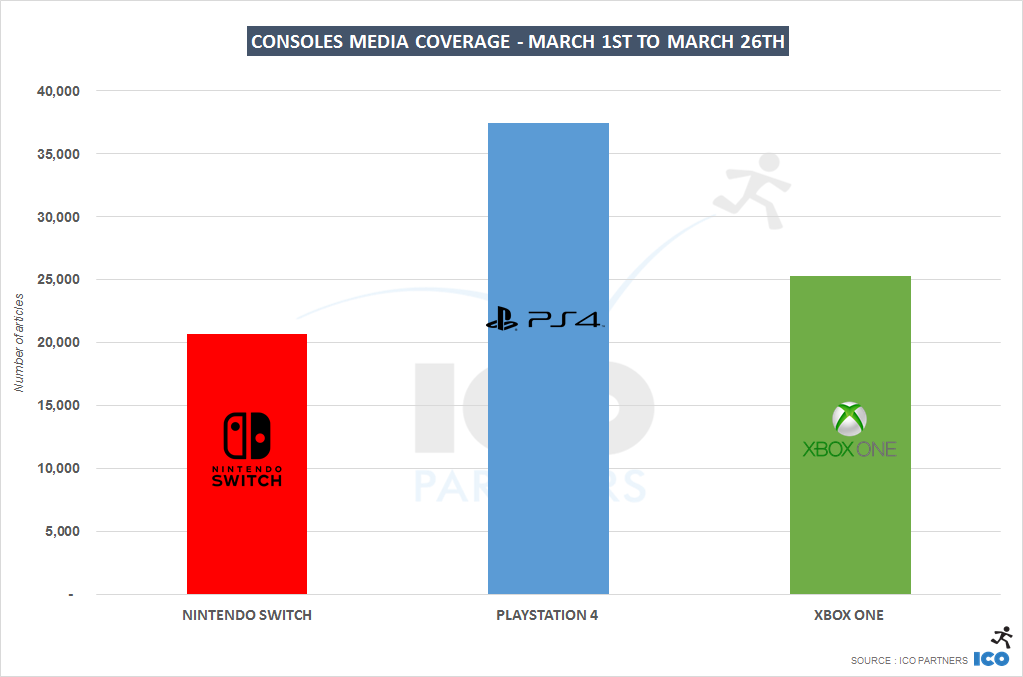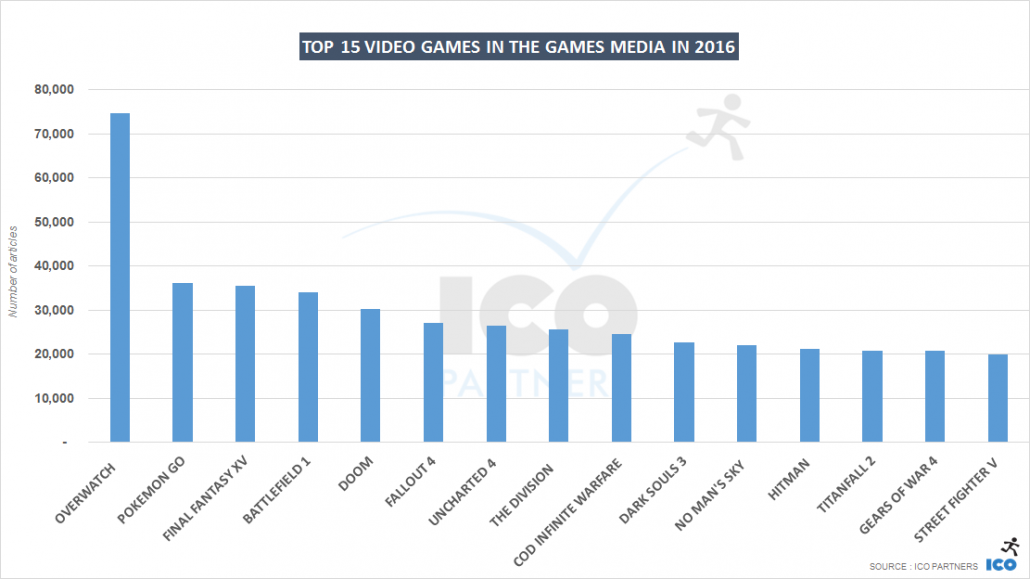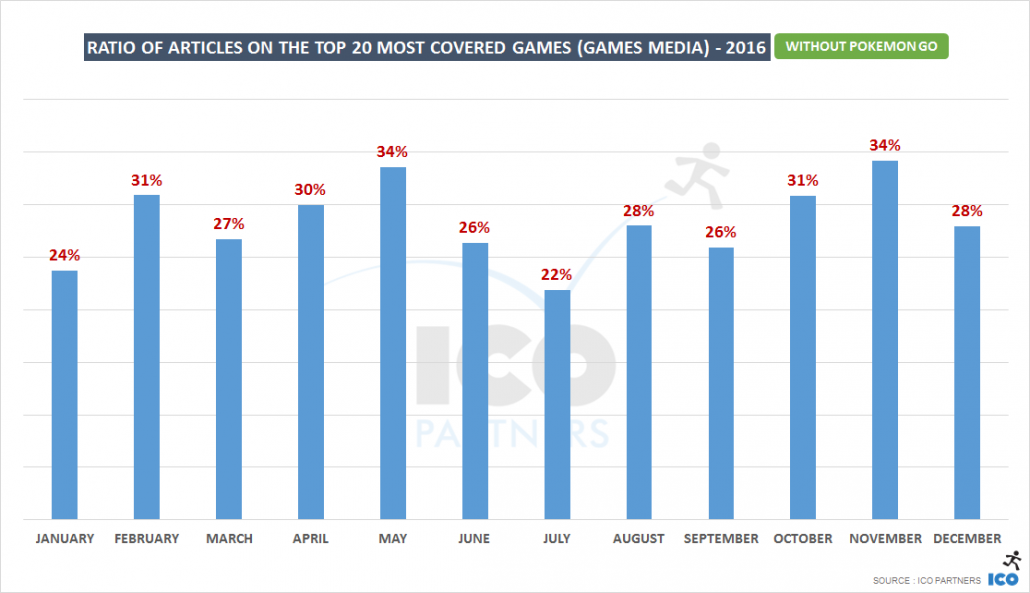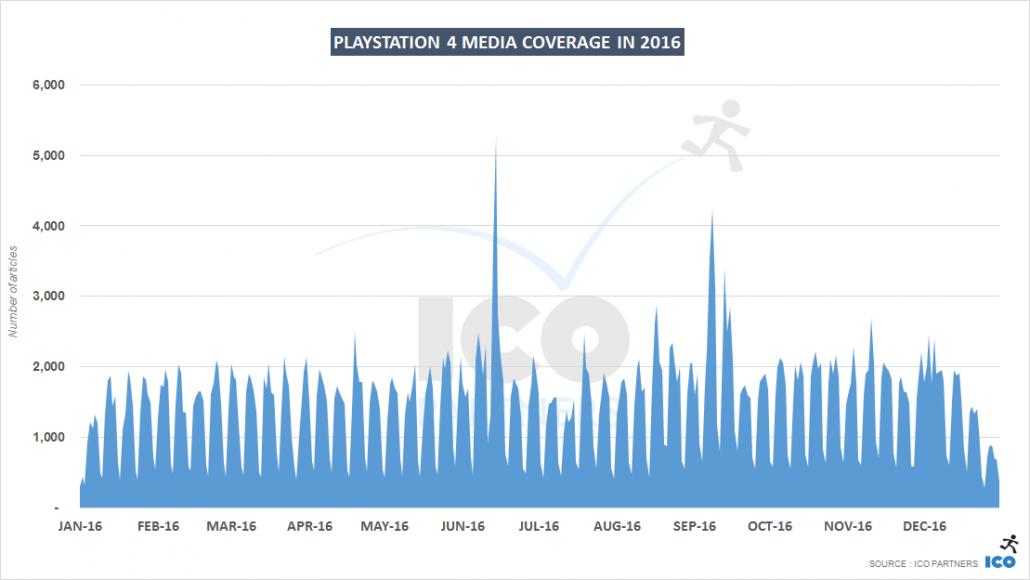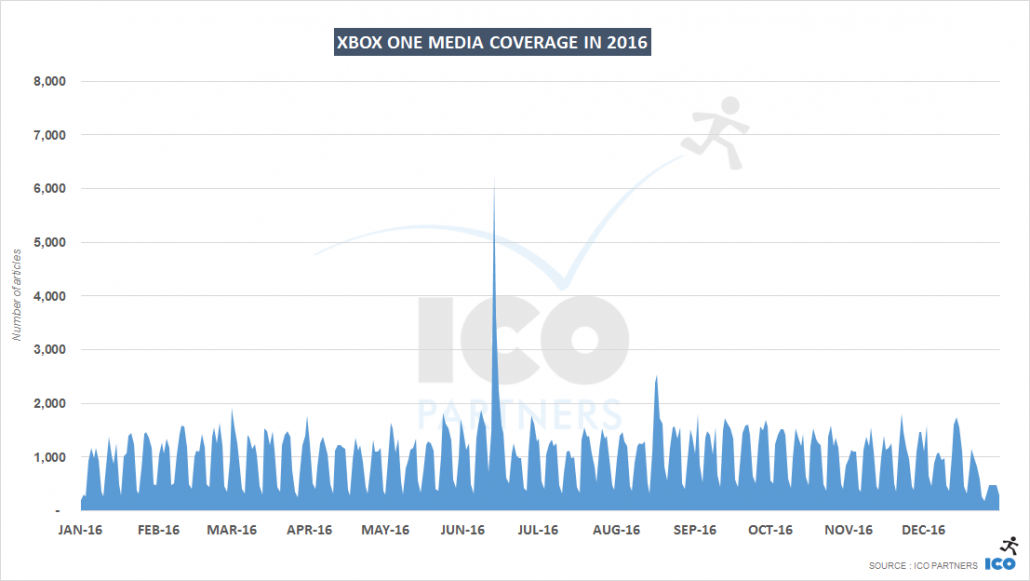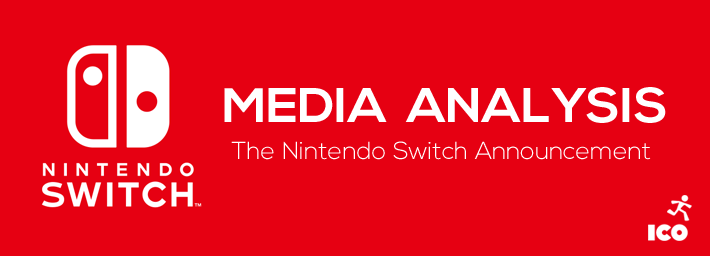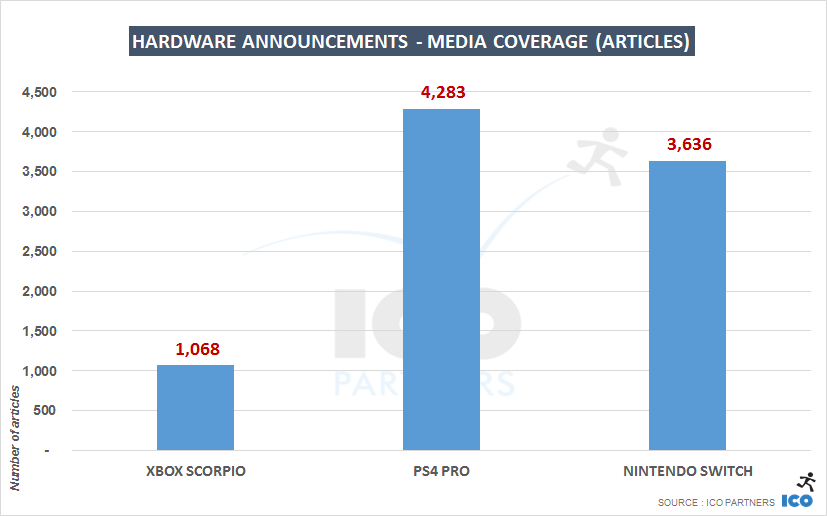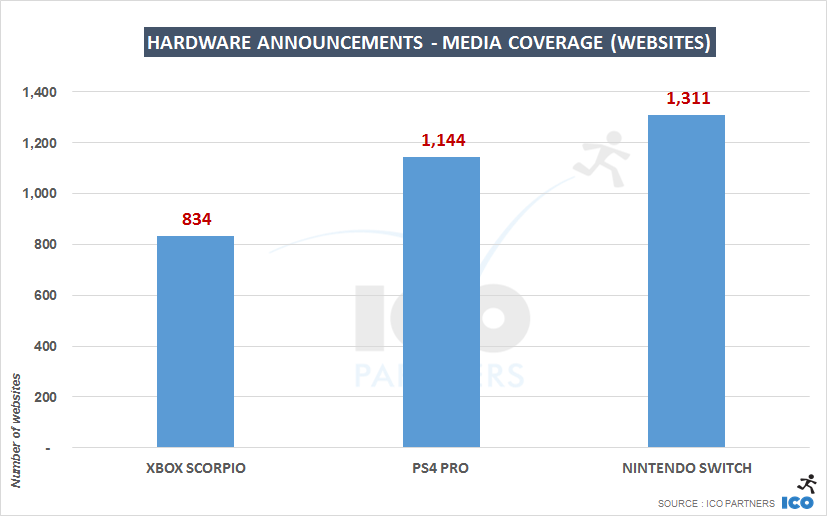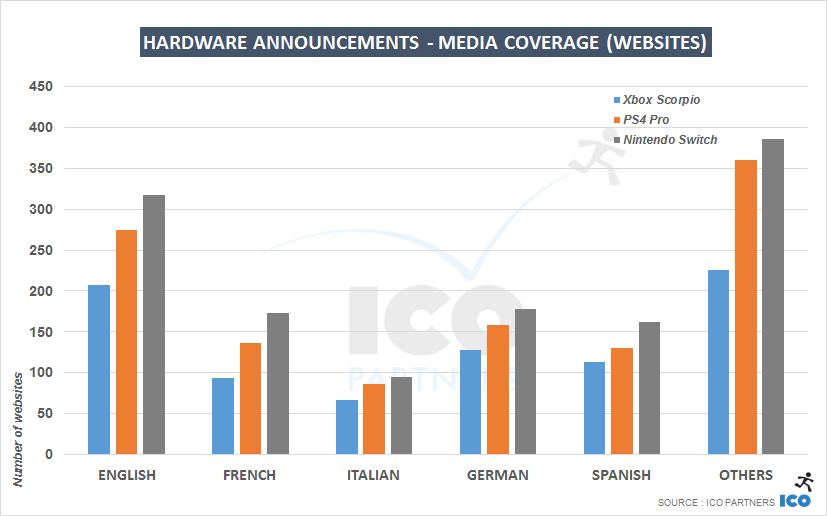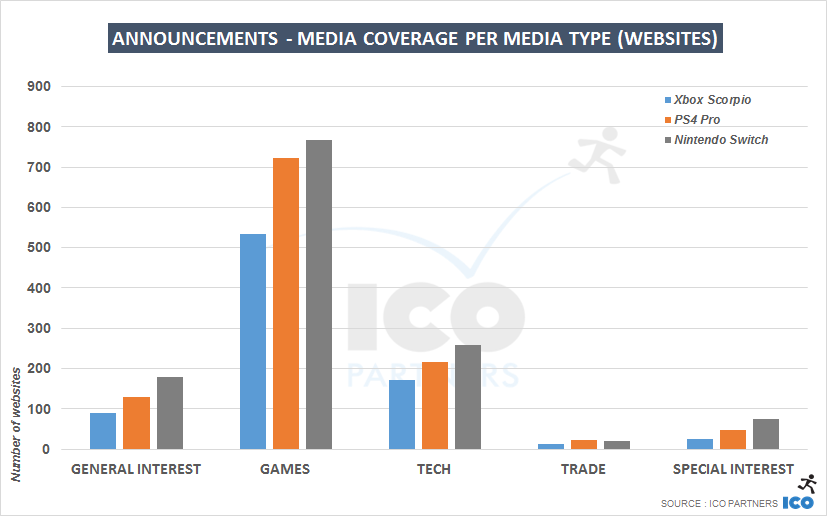This is the third article of media coverage analysis for the Nintendo Switch, but it’s the most important one as the console has now been released. While I will discuss previous announcements, you can read again the posts about the console’s first announcement and the January event that revealed most of the details about it.
The console has now been widely available for 3 weeks, and we can look at both the announcement, and some level of data over time, to see how it looks for this new console.
Hardware Coverage Comparison
With our data only going back to early 2014, there are no comparable launches to compare the Nintendo Switch with. For lack of better comparisons, I had a look at the coverage of the first announcements for the PS4 Pro, the PS VR and the Xbox Scorpio, and the coverage of the launches of the PS4 Pro and PSVR.
The PS4 Pro initial announcement was during a Sony event, and set out a lot of details for the new machine. The way the communication was structured for it, there was a short cycle between the announcement and the launch (2 months), and the fact the announcement was done outside of other industry events allowed it to garner significant coverage. The initial announcement also served as in-depth reveal for that matter.
The PSVR initial announcement (as project Morpheus at the time) was done during GDC 2014, and was still very vague on any details. That first reveal wasn’t massive with media coverage. Interestingly, 2 years later, at GDC 2016, the reveal of the details of the device and its price point was its biggest beat.
Project Scorpio (next Xbox One iteration) was first announced during E3 2016, and beyond the fact it would have the highest quality pixels that anybody has seen, Microsoft didn’t provide many details during the announcement. We are basically still waiting for the device’s in-depth announcement, which is likely to be at this year’s E3, leading to a launch before the holiday season.
The communication on the Nintendo Switch was very controlled, and beyond the initial announcement and the in-depth reveal, there were no real major beats before the launch. The only other communication was earlier in the week of the launch with a number of indie titles announced (some officially by Nintendo and a good number of others announced by their respective publishers).
So, what does it mean for the Nintendo Switch announcements and launch?
First, launches are not as exciting as the reveals of the details of the console. By the time they hit the market, the story is a bit dull and generally consists of a reminder of what the console is, probably its line up and the fact that “yes, you can buy it now”. The fact they don’t garner as much coverage as the in-depth reveals despite having a line-up of games immediately available that also should drive coverage seem to highlight that media still prioritise hardware news over games. In that respect, the media coverage of the Nintendo Switch, while significantly higher than the other two devices we can compare it to, is nothing incredibly impressive. The fact is, there were fewer articles mentioning the Nintendo Switch than the PlayStation 4 on the days of the launch, and that’s probably a direct consequence from the small line-up on the Switch, and the impressive head-start Sony has when it comes to media relations.
Second, in-depth events are the ones that matter the most to get coverage. Is it obvious? Absolutely, but I think you should always approach analysis with an open mind and getting evidence of the obvious is still a good take away. What is also very interesting is the relative success of this reveals. The Nintendo Switch being in January, outside of any events, and being quite close to the actual launch, really paid off in my opinion there for Nintendo.
To get a better sense of the Nintendo Switch potential for media coverage, let’s look at coverage over time, rather than at scheduled events.
Console coverage patterns
[please note that all the data presented here is as of March 26th – all monthly data labelled as March 2017 are until that date]
I have added the Wii U to the mix from the graph over time as I think it is essential to understand where Nintendo is coming from in terms of their console media coverage.
So what is transpiring here:
- As we mentioned many times before, the PlayStation 4 is the clear leader when it comes to console media coverage, and this is a constant. Even when looking at the weekly coverage volumes, since January 2015, only once did the Xbox One secure more coverage than the PlayStation 4. It was the week of the gamescom 2015, where Microsoft held a press conference and Sony did not. The gap between the two is actually widening over time.
- Microsoft doesn’t seem to be learning from Sony when it comes to making big announcements outside of major industry events. Or even outside of E3. That dependence on E3 seems like a very risky strategy. Yes, E3 is still clearly the most important event of the year when it comes to coverage of the video games industry, but at the moment, Microsoft is not learning how to also do announcements at other times. Sony’s September event drove coverage to the level of their E3 weekly coverage, and when it comes to monthly coverage, it was their best month since we started tracking the articles mentioning the PlayStation 4. The Xbox One’s best month was June and E3.
- The Wii U has been lagging behind the other consoles for a long time now. The decline is clearly visible, and even a major release like Zelda Breath of the Wild doesn’t seem to have much of an effect – it is clear the console is a very low priority for the media. Again, this is not an unexpected result, but we can now see the scale of it.
- The Nintendo Switch is having an excellent start. Of course, a lot of that coverage is thanks to the January in-depth reveal that got really good coverage, and the momentum of the launch, but for a console with such a limited line-up, it seems that there is significant interest for the console, outside of just the launch. If the average weekly coverage stays around 4,000 articles/week, that puts it a bit above half of the Xbox One weekly average and at 40% of the PlayStation 4 weekly average, which would be an excellent foundation for Nintendo to build on.
Conclusion
Nintendo is getting a new console cycle, and the media seem to be keen on supporting it for now. It has a long way to go still, but they didn’t make any significant mistakes so far, and despite a very small launch line-up they secured a decent amount of coverage, and the poor interest for the Wii U doesn’t seem to have damaged the interest for the Switch. They also seem to have learned to make their announcements on their own time and not let major events dictate their calendar. Interestingly, they have just announced that they are planning a “big E3”, which is probably the next important series of announcements for them to get right to stay relevant and present in the media.


